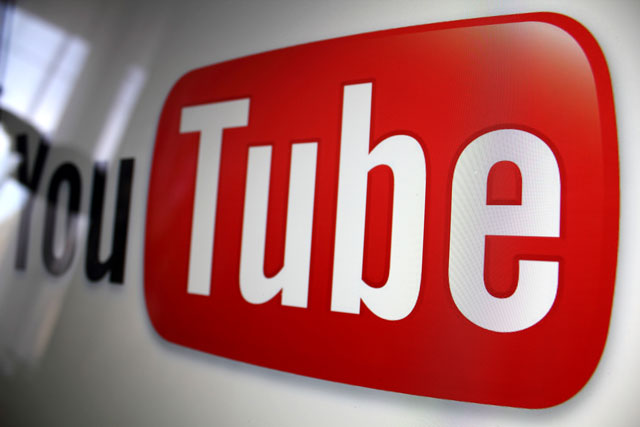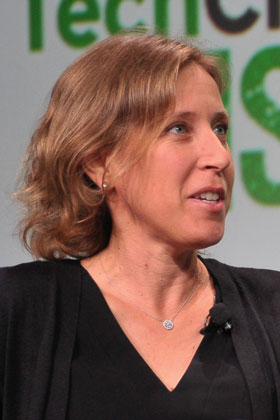
Susan Wojcicki will forever be part of Google’s history. The company literally started in her home and garage, which she rented in 1998 to two graduate students, Sergey Brin and Larry Page.
Now in her third decade at Google and entering her fourth year as YouTube’s CEO, the 48-year-old executive has the best shot in 2017 to prove YouTube can translate its huge audience into more revenue and to lead the remaking of television into a video-everywhere model that appeals to a younger generation weaned on smartphones and Netflix.
It feels cruel to ding a business that has more than a billion monthly users globally, has become a verb and generates multiple billions of dollars in revenue each year. Yet Wojcicki hasn’t changed the fact that YouTube helped popularise digital video but hasn’t yet lived up to its enormous financial potential.
Consider this: Facebook is on track to generate more than US$27bn in revenue this year, nearly all from advertising messages on Facebook and Instagram. That will work out to an average of about $16 for each person using Facebook and its sister app, Facebook Messenger.
Parent company Alphabet doesn’t disclose YouTube’s revenue or specific user numbers, but we can make some rough assumptions. Research firm eMarketer estimates YouTube will generate about $5,6bn in 2016 revenue, excluding the share of advertising dollars YouTube splits with the companies that make its Web videos and with distribution partners. If YouTube has somewhere between 1,2bn and 1,65bn monthly users, that is roughly $3,50 to $5 in revenue from each user.
Granted, YouTube’s business model is different from that of Facebook or Google Web search. For one, YouTube doles out a significant chunk of its revenue to the creators of many of its videos. But the gap exists, and it spotlights the broad challenge for Wojcicki: YouTube could be so much more as the world’s biggest Web video hangout tethered to the Internet’s best money machine.
The opportunity is there if Wojcicki can take advantage of it, because the winds are blowing in YouTube’s favour. Younger people are spending less time watching traditional television and more time glued to their smartphones — including YouTube. Advertising revenue will eventually follow those viewers into digital video hangouts.
Wojcicki has also continued YouTube’s success in reshaping entertainment by coaxing large media companies such as NBC Universal to devote more programming to YouTube, and by minting YouTube personalities like PewDiePie and Lilly Singh, whose videos can draw more people than those from traditional entertainment companies.

Fulfilling YouTube’s potential lies in building a bridge to television, where 40% of advertising budgets are spent and where the rules of the game have sometimes eluded Google. Yes, huge audience size matters, but so does the mix of large numbers of people, the kind of people that the advertisers want to pitch to, and the shelter of programming that advertisers want to get behind. Google and YouTube have never fully embraced the rules of so-called brand advertising.
Under Wojcicki, YouTube has been working to change that. YouTube two years ago started to let advertisers plant their commercial messages next to popular video channels from professional entertainment companies or personalities, separate from the flood of mass market videos. It’s not perfect, but the new advertiser option made YouTube operate a bit more like TV, and analysts say the ad rates YouTube generates are in the same range as television ad prices.
YouTube is working with the advertising industry on standardising viewership ratings across traditional television and Web video — another step to get advertisers comfortable with YouTube. YouTube is also creating a new business model, with the creation of its first significant subscription video service — and soon to be a second — including programming exclusive to YouTube. That makes YouTube dip into the same business as cable television and Netflix.
Even while the winds are at YouTube’s back, it has more competition than ever for people’s leisure time and advertisers’ money. Facebook, Netflix, Snapchat, AT&T, Twitter, Amazon, Verizon, Apple and many of the traditional TV networks are also vying at least to some degree with their own digital video features, and in some cases for the same crop of professional new media stars and the advertising money that follows.
Wojcicki has in her favor Google’s limitless resources, and growing credit from advertisers for catering to their needs. YouTube has already changed entertainment and the Internet. Now for YouTube to get to the next level, Wojcicki has to bridge the canyon between the worlds of TV and the Web. No pressure. — (c) 2016 Bloomberg LP




